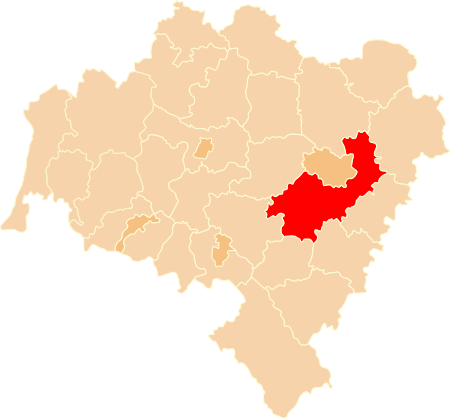Wrocław County

Wrocław County (Polish: powiat wrocławski) is a unit of territorial administration and local government (powiat) in Lower Silesian Voivodeship, south-western Poland. It came into being on January 1, 1999, as a result of the Polish local government reforms passed in 1998. The county covers an area of 1,116 square kilometres (431 sq mi). Its administrative seat is the city of Wrocław, although this city is not part of the county (it forms a separate city county). Wrocław County consists of areas to the east and south of Wrocław (city with county rights), and contains three towns: Sobótka, Kąty Wrocławskie and Siechnice. As of 2019 the total population of the county is 148,663, out of which the population of Siechnice is 8,113, that of Kąty Wrocławskie is 6,994, that of Sobótka is 6,981, and the rural population is 126,575.
Excerpt from the Wikipedia article Wrocław County (License: CC BY-SA 3.0, Authors, Images).Wrocław County
Geographical coordinates (GPS) Nearby PlacesShow on map
Geographical coordinates (GPS)
| Latitude | Longitude |
|---|---|
| N 51.116666666667 ° | E 17.033333333333 ° |









